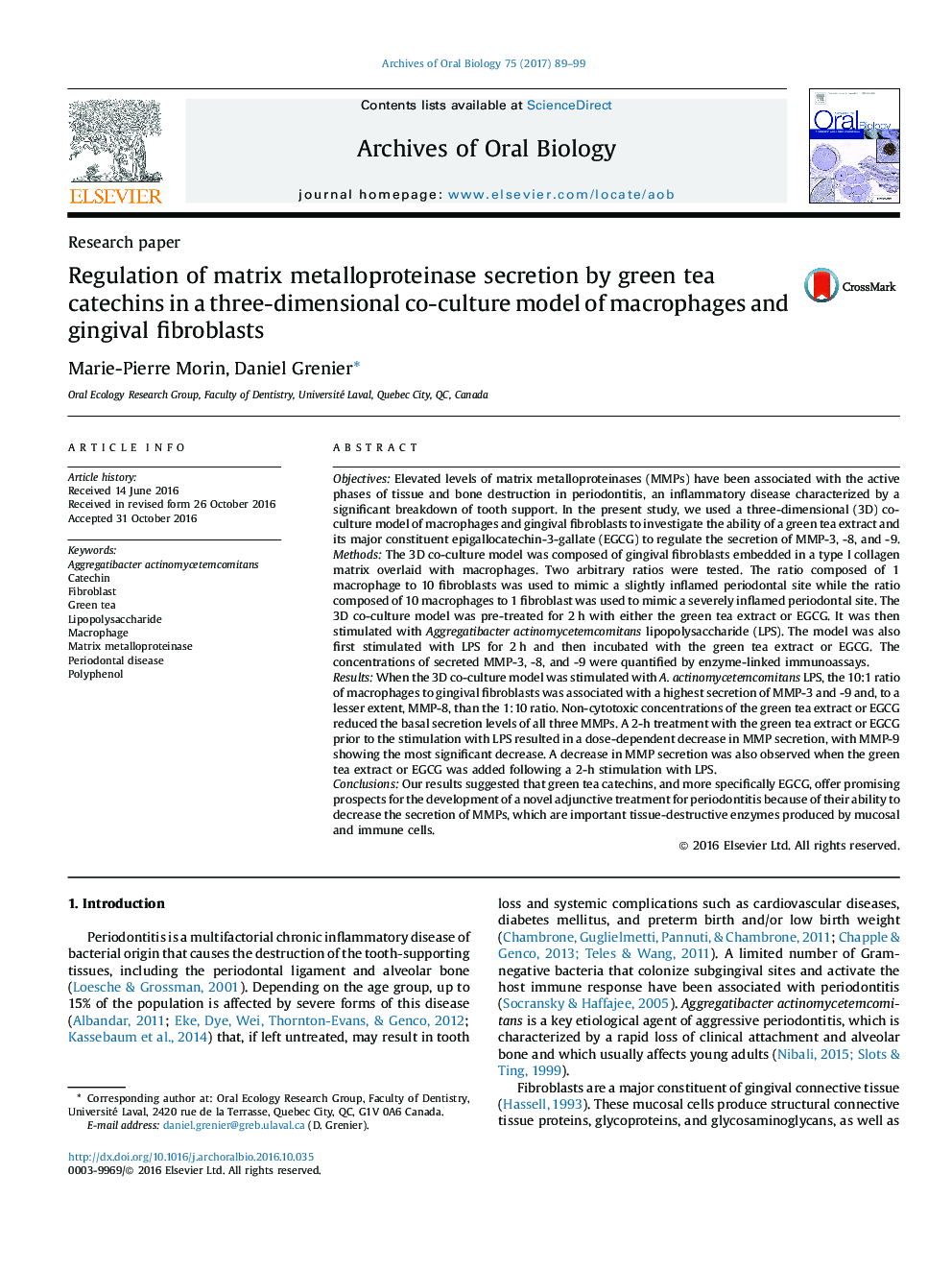| کد مقاله | کد نشریه | سال انتشار | مقاله انگلیسی | نسخه تمام متن |
|---|---|---|---|---|
| 5638108 | 1583278 | 2017 | 11 صفحه PDF | دانلود رایگان |
- A co-culture model of macrophages and gingival fibroblasts with a 10:1 ratio produces higher amounts of MMP-3, â8, and â9 than that with a 1:10 ratio.
- The production of MMPs by the co-culture model is inhibited by a green tea extract as well as EGCG, its major constituent.
- Green tea catechins offer a preventive and therapeutic potential against periodontal disease.
ObjectivesElevated levels of matrix metalloproteinases (MMPs) have been associated with the active phases of tissue and bone destruction in periodontitis, an inflammatory disease characterized by a significant breakdown of tooth support. In the present study, we used a three-dimensional (3D) co-culture model of macrophages and gingival fibroblasts to investigate the ability of a green tea extract and its major constituent epigallocatechin-3-gallate (EGCG) to regulate the secretion of MMP-3, -8, and -9.MethodsThe 3D co-culture model was composed of gingival fibroblasts embedded in a type I collagen matrix overlaid with macrophages. Two arbitrary ratios were tested. The ratio composed of 1 macrophage to 10 fibroblasts was used to mimic a slightly inflamed periodontal site while the ratio composed of 10 macrophages to 1 fibroblast was used to mimic a severely inflamed periodontal site. The 3D co-culture model was pre-treated for 2Â h with either the green tea extract or EGCG. It was then stimulated with Aggregatibacter actinomycetemcomitans lipopolysaccharide (LPS). The model was also first stimulated with LPS for 2Â h and then incubated with the green tea extract or EGCG. The concentrations of secreted MMP-3, -8, and -9 were quantified by enzyme-linked immunoassays.ResultsWhen the 3D co-culture model was stimulated with A. actinomycetemcomitans LPS, the 10:1 ratio of macrophages to gingival fibroblasts was associated with a highest secretion of MMP-3 and -9 and, to a lesser extent, MMP-8, than the 1:10 ratio. Non-cytotoxic concentrations of the green tea extract or EGCG reduced the basal secretion levels of all three MMPs. A 2-h treatment with the green tea extract or EGCG prior to the stimulation with LPS resulted in a dose-dependent decrease in MMP secretion, with MMP-9 showing the most significant decrease. A decrease in MMP secretion was also observed when the green tea extract or EGCG was added following a 2-h stimulation with LPS.ConclusionsOur results suggested that green tea catechins, and more specifically EGCG, offer promising prospects for the development of a novel adjunctive treatment for periodontitis because of their ability to decrease the secretion of MMPs, which are important tissue-destructive enzymes produced by mucosal and immune cells.
Journal: Archives of Oral Biology - Volume 75, March 2017, Pages 89-99
